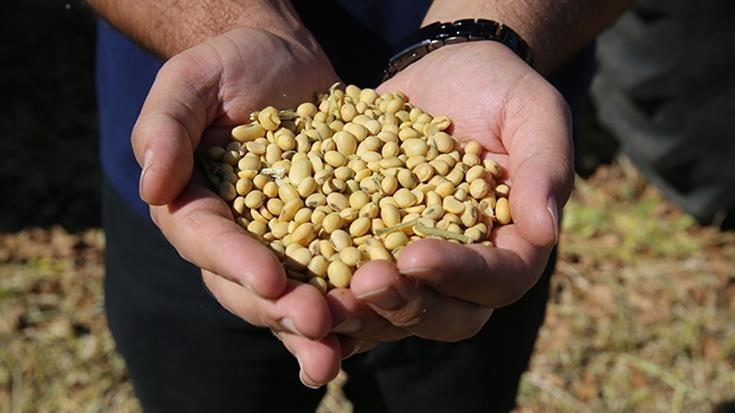Africa-Press – Kenya. As trade tensions between the US and China continue with more and more measures from the two sides, soybeans have become a new frontier in the trade wars. The escalating trade tensions between the two countries have increased risk perception in global markets, affecting commodity prices.
China recently introduced additional measures to restrict the export of rare earth elements, and in return, US President Donald Trump announced that he will impose a 100% tariff on top of the already existing rate on Beijing effective Nov. 1, as well as imposing export controls on all critical software.
He is now claiming that China is “purposefully not buying” American soybeans, according to a recent social media post. China has, however, diversified its soybean imports to replace the US as a source since Trump took office. Reports show that China has yet to secure a large portion of its soybean supply for December and January, while high prices for Brazilian cargoes are pushing away buyers.
Beijing may be pushed to utilize state reserves to meet its near-term soybean needs, and this possibility is affecting the soybean market. Soybeans saw a moderate increase versus the end of last year as they started 2025 at $10.10 per bushel, falling to $9.70 sometime during the year and stabilizing around $10.82.
“Soybeans are a crop with sociopolitical importance in Washington, as farmers played a big role in Trump’s election,” Sadi Kaymaz, an Asia markets expert, told Anadolu. He noted that the United States is one of the world’s two largest soybean exporters, alongside Brazil, but China is not self-sufficient in soybeans.
Kaymaz said that China’s large livestock industry makes it so that Beijing has to source a significant portion of its soybean needs from outside of China, and due to US-China tensions, Beijing turned to Brazil in recent years.
He said soybeans have been trading weak this year on the Chicago Mercantile Exchange as China almost stopped ordering soybeans from the US. “Trump is angry with that, as he said China is being hostile by cutting soybean orders, and he threatened to stop importing cooking oil from China,” he said.
High interest rates and rising fertilizer costs are also putting more pressure on farmers. “Agricultural analysts say that China needs to purchase around 10 million tons of soybeans by the end of the year,” he added.
Kaymaz said that shipments from Brazil rose nearly $3 per bushel due to weather conditions and transport costs, noting that China has seemingly adopted a wait-and-see approach as of mid-October as Brazilian soybeans remain expensive and US soybeans are “politically off-limits.”
“Chinese agricultural analysts say that state reserves may be used at this point, as the 44-million-ton commercial stocks that it accumulated with intensive purchases over several years can serve as a buffer,” he said. Kaymaz said that a possible trade war ceasefire between the US and China could increase soybean prices.
“Brazil’s soybean export volumes exceeded 102 million tons in the first nine months of the year, marking a new record,” he said. “China’s appetite plays a huge role in this — of every 100 tons of soybeans Brazil exported this year, 79 tons went to China.”
He noted that China is the largest market for pulp, coffee, corn and many other resources as well as for the world’s largest iron ore miner, Vale. After Trump imposed a 50% tariff on Brazil, China bought more and more Arabica coffee beans.
For More News And Analysis About Kenya Follow Africa-Press






